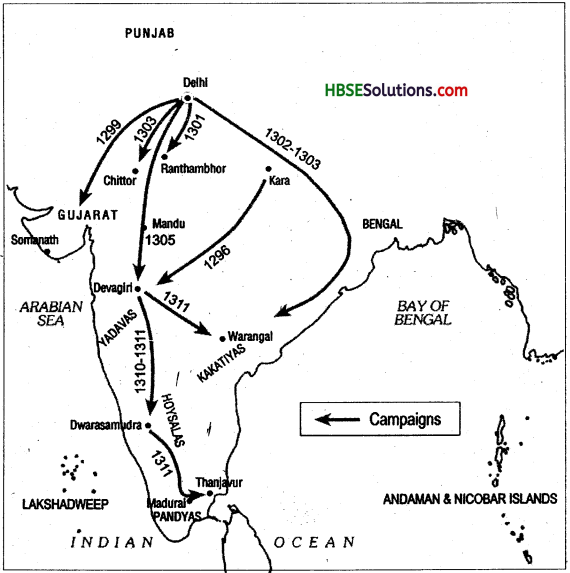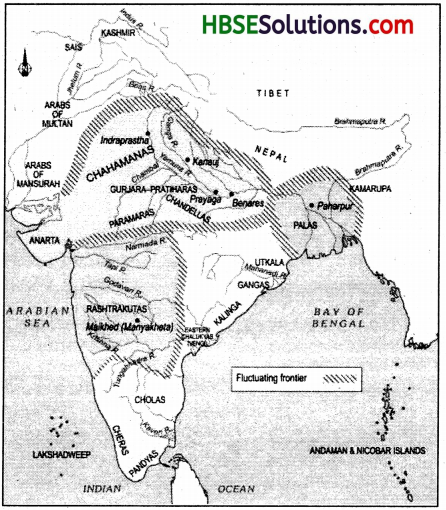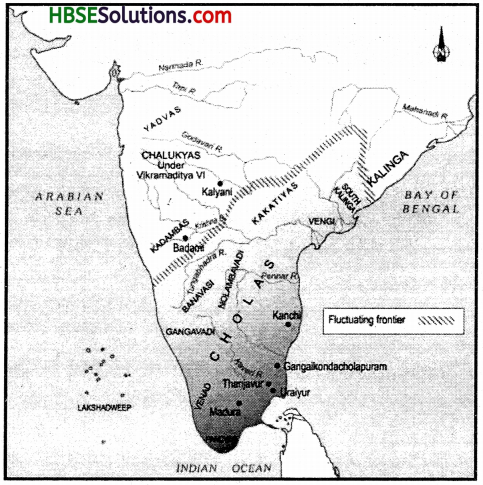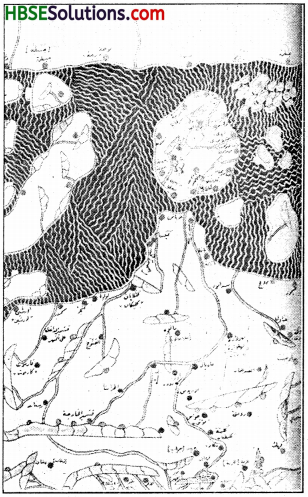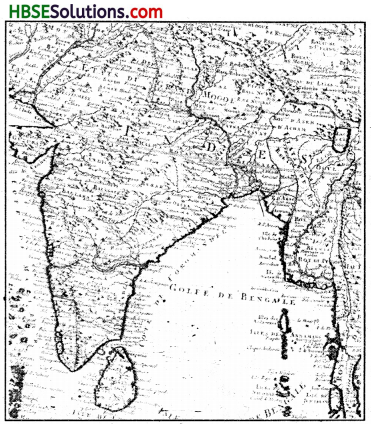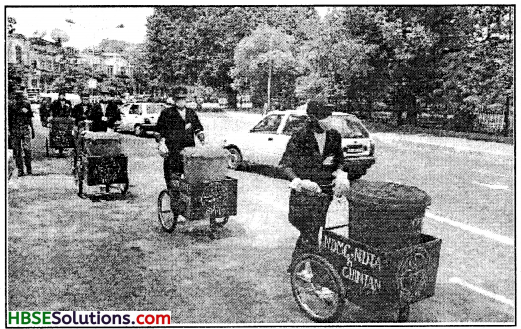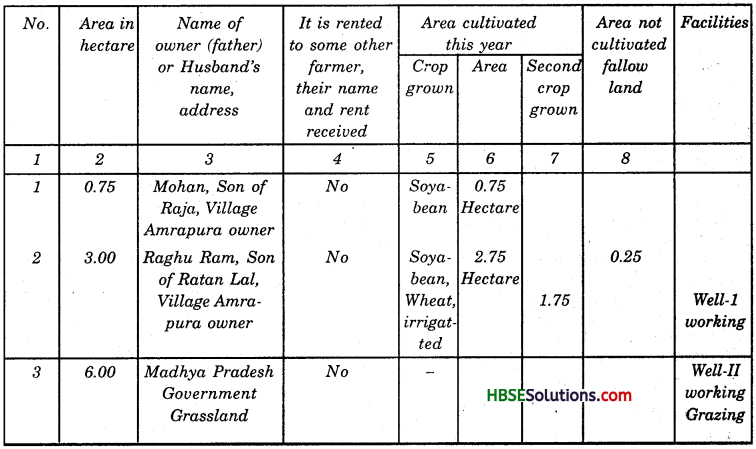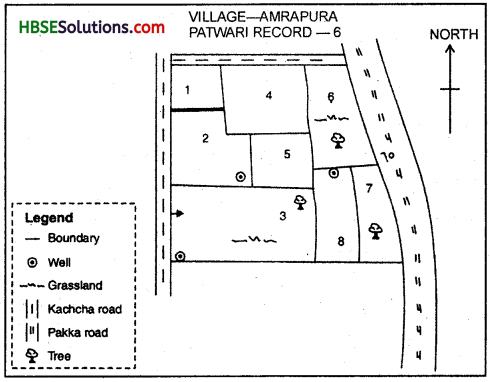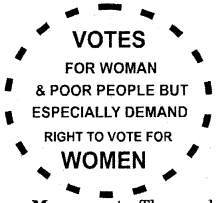HBSE 7th Class Social Science Solutions History Chapter 3 The Delhi Sultans
Haryana State Board HBSE 7th Class Social Science Solutions History Chapter 3 The Delhi Sultans Textbook Exercise Questions and Answers.
Haryana Board 7th Class Social Science Solutions History Chapter 3 The Delhi Sultans
HBSE 7th Class History The Delhi Sultans Years Textbook Questions and Answers
LET’S RECALL
Question 1.
Which ruler first established his or her capital at Delhi?
Answer:
Tomara Rajputs established his capital at Delhi.
Question 2.
What was the language of administration under the Delhi Sultans?
Answer:
The language of administration under the Delhi Sultans was Persian.
Question 3.
In whose reign did the sultanate reach its farthest extent?
Answer:
Under the reign of Ala-ud-din-Khilji, the sultanate reached its farthest extent.
![]()
Question 4.
From which country did Ibn Batuta travel to India?
Answer:
Ibn Batuta travelled to India from Morocco (Africa).
LET’S UNDERSTAND
Question 5.
According to the ‘Circle of Justice’ why was it important for military commander to keep the interest of peasantry in mind?
Answer:
According to the Circle of Justice it was important for military commander to keep the interest of peasantry in mind, because each commander got the salary from the Iqta he got. They could not collect more revenue than the fixed by the govt. Accountant were appointed by the state to check the amount of revenue collected by them (rhuqtis).
Question 6.
What is meant by the ‘Internal’ and external frontier of the Sultanate?
Answer:
Internal Frontier of the Sultanate: By this term we mean that the Sultanate aimed at consolidating the hinterland of the garrison town.
External Frontier of the Sultanate: It aims at the military expeditions of the Sultanate in Southern India started during the reign of Ala-ud-din Khilji and culminated with Muhammad Tughlaq.
Question 7.
What were the steps taken to ensure that muqtis performed their duties? Why do you think they may have wanted to defy the orders to sultans?
Answer:
Following steps were taken to ensure that muqtis performed their duties:
1. They were not awarded Iqta for throughout their life.
2. They were appointed for a very short tenure.
3. They were transferred from one Iqta to another Iqta.
They wanted to defy the order, because there were number of restrictions on them. At any time they could be transfer. Moreover accountants were appointed by the state to check the amount collected by him. Care was also taken that muqtis collected only the taxes prescribed by the state.
Question 8.
What was the impact of Mongols invasion on Delhi Sultanate?
Answer:
The Mongols under the Genghis Khan invaded Transwiana in north-east Iran in 1219 and then on Delhi. Mongols attacks increased on Delhi during the reign of Ala- ud-din Khilji.
Impact:
1. Jt paved the way for the disintegration of Delhi Sultanate.
2. It forced the two rulers (Ala-ud-din Khilji and Muhammad Tughluq) to mobilise a large standing army in Delhi which passed a huge administrative challenge.
![]()
LET’S DISCUSS
Question 9.
Do you think the authors of tawarikh would provide information about the lives of ordinary men and women? I do not think.
Answer:
The authors of tawarikh provided information about the lives of ordinary men and women. They often wrote their histories for Sultans in the hope of rich awards. He mainly lived in Delhi and hardly ever visited a village.
Question 10.
Raziyya Sultan was unique in the history of the Delhi Sultanate. Do you think women leaders are accepted more readily today?
Answer:
Yes, today women leaders are accepted more readily today. For example, Indira Gandhi became a successful and lover Prime Minister of India.
Question 11.
Why were the Delhi Sultans interested in cutting down forests? Does deforestation occur for the same reason?
Answer:
The Sultans of Delhi wanted to extend cultivation so that they could collect more land revenue. Hence, they ordered the cutting of forests. Today, forests are cut for the extension of agriculture and establishment of industrial units.
LET’S DO
Question 12.
Find out whether there are any buildings built by the Delhi Sultans in your area. Are there any other buildings in your area that were built between the twelfth and fifteenth centuries? Describe some of these buildings and draw sketches of them.
Answer:
Try yourself with the help of your class-teacher.
Question 13.
Do you think the circle of justice is an appropriate term to describe the relationship between the king and his subjects?
Answer:
Yes, I think the circle of justice is an appropriate term to describe the relationship between the king and his subjects.
![]()
Question 14.
Express Minhaj’s ideas in your own words. Do you think Raziyya shared these ideas? Why do you think it was so difficult for a woman to be a ruler?
Answer:
1. According to Minhaj, God has created a social order in which woman is subordinate to man. Therefore, a woman like Raziyya does not have right to rule. It is totally against the ideal social order created by God.
2. I think Raziyya did not share these ideas.
3. It was very difficult for a woman to be a ruler because of her belonging to a subordinate gender, according to the social set up at that time.
Question 15.
But how complete and effective was its control over such a vast territory?
Answer:
Thp Sultanate did not have complete and much effective control over such a vast territory, except under the rule of Alauddin Khalji.
Question 16.
(i) Compare figures 2, 3, 4 and 5. What similarities and differences do you notice amongst the mosques?
Answer:
Similarities:
(a) Every mosque has a big entrance door
(b) Every mosque’s entrance door is extended to both sides in the corridors
(c) Domes are made over the entrance and corridor.
Differences:
(a) The designs around the entrance door become complex and intricate from fig. 2 to fig. 5.
(b) The small window over the entrance door can be seen only in three mosques in figs. 3, 4, 5. But fig. 3 show three such windows. Whereas figs. 4 and 5 shows only single window over the entrance
(c) There is a boundary around the dome over the entrance door in fig. 5. This is not seen in any other figure.
Question 17.
(i) Can you think of any reason why a slave would be better than a son?
Answer:
A well brought up slave always serves better than the son in the old days of master.
(ii) Why do you think Barani criticised the Sultan?
Answer:
The Sultan Muhammad Tughluq appointed lower-caste or base-born people to the higher administrative post by ignoring the nobles. That is why, Barani criticised Sultan.
Question 18.
Describe the ways in which the chieftains arranged for their, defence.
Answer:
(a) The chieftains fortified themselves in mountains, in rocky, uneven and rugged places as well as in bamboo groves.
(b) The bamboo grove forest served as ramparts, inside which people lived with their cattle and their crops
(c) Also rain water was collected to fulfil water needs
(d) The bamboo remained unaffected by fire and was very hard to cut. This made it a suitable and most defensive place to live in.
IMAGINE
Question 19.
You are a peasant in Alauddin Khalji’s or Muhammad Tughluq’s reign and you cannot pay the taxes demanded by the Sultan. What will you do?
Answer:
(a) If I were a peasant in Alauddin Khalji’s reign. I would try to save my life because I might have captured by Sultan’s men and would be severely punished.
(b) If I were a peasant in Muhammad Tughluq’s reign I would join the rebel against the sultan.
![]()
HBSE 7th Class History The Delhi Sultans Important Questions and Answers
Very Short Answer Type Questions
Question 1.
Who lived in Delhi before Delhi Sulans occupied it?
Answer:
Many rich Jaina merchants lived in the city of Delhi before Delhi Sultans occupied it.
Question 2.
Name the coin that was in circulation in Delhi.
Answer:
Dehliwal was the name of coin that was in the circulation in Delhi.
Question 3.
Name the cities built by Delhi Sultans in Delhi.
Answer:
Delhi-i-Kuhna, Siri and Jahanpanah were the names of various cities built by Delhi Sultans in Delhi.
Question 4.
What is the main source of information about Delhi Sultanate?
Answer:
The main source of information about Delhi Sultanate in “histories” tarikh (singular) or tawarikh (plural) written in Persian.
Question 5.
Who wrote tawarikh?
Answer:
The authors of tawarikh were learned men: Secretaries, administrators, poets and courtiers.
Question 6.
Why did Iltutmish favour bandagan?
Answer:
Bandagan were special slaves purchased for military service. Hence, Iltutmish favoured them.
Short Answer Type Questions
Question 1.
What is meant by the following terms: namaz, imam, khutba, qibla?
Answer:
namaz: prayers; imam: leader of muslims at the time of prayer; khutba: sermon delivered by imam during the Friday prayer; qibla: facing towards Mecca while praying.
Question 2.
What was iqta?
Answer:
Iqta was the land governed by military commanders, as it was granted to them by Sultans in the place of cash salary for their services.
![]()
Question 3.
Which regional states came up at about. 1526 AD in Indian subcontinent?
Answer:
At about 1526 AD, Delhi Sultanate had declined. The regional states that rose to the power in thq subcontinent were Jaunpur, Bengal, Malwa, Gujarat’ Rajasthan, etc.
Question 4.
Why did the early Delhi Sultans favoured their special slaves purchased for military service?
Answer:
The early Delhi Sultans favoured their special slaves purchased for military service because:
1. They were carefully trained to man some of the most important political offices in the kingdom.
2. They were totally dependent upon their master, the Sultan could trust and rely upon them.
Question 5.
How was the control over muqtis maintained during the reigns of Alauddin Khilji and Muhammad Tughluq?
Answer:
The control over muqtis was maintained because:
(a) Their office was not inheritable.
(b) They were assigned iqtas for a short period of time before being shifted.
Question 6.
What were the three types of taxes collected under Delhi Sultanate?
Answer:
The three types of taxes collected
under Delhi Sultanate were as follows:
(а) On cultivation called Kharaj and amounting to about 50 percent of the peasant’s produce.
(b) On cattle
(c) On houses.
Long Answer Type Questions
Question 1.
How did Ala-ud-din Khilji and Muhammad Tughluq deal differently with administrative challenges posed by Mangol attacks on the Delhi Sultanate?
Answer:
| Ala-ud-din Khilji | Muhammad Tughluq |
| (i) (a) Delhi was attacked twice.
(b) Alauddin Khilji raised a large standing army. |
(i) (a) Sultanate was attacked in early years of his reign.
(b) The Mongol army was defeated. |
| (ii) Constructed a new garrison town named Giri for his soldiers. | (ii) The oldest of the foul! cities of Delhi (Delhi-i-Kuhna) was emptied of its residents and soldies garrisoned there. |
| (iii) The soldiers were fed through the produce collected as tax from lands between the Ganga and Yamuna. | (iii) Produce from the same area was collected as tax to feed the army. Additional taxes were also lived. |
| (iv) The soldiers were paid in cash rather than Iqtas. To stop the merchants from raising the prices Alauddin controlled the prices of goods in Delhi. | (iv) He paid cash salaries to soldiers. He used a ‘token’ currency However, this currency was ch. ap and people did not trust these coins. |
Question 2.
Ala-ud-din wanted to became second Alexander and conquer the world. What steps did he take to achieve his aim? How far did he succeed?
Answer:
Khiljis established their empire in 1290 A.D. on the ruins of the kingdom of the Slave Sultans. Jalal-ud-din-Khilji was the first king of this dynasty He was succeeded by Ala-ud-din-Khilji in 1296 A.D. He was very ambitious. He wanted to become a second Alexander and like him to conquer the world.
Steps taken to achieve the aims:
1. Ala-ud-din tried to win loyalty of his nobles and curb their power.
2. He tried to conquer the Deccan and Rajasthan.
3. He tried to force the Mongols to withdraw.
In order to achieve his aim he needed a large army which meant, vast sum of money so, he had to think ways and means of getting more revenue for which he took the following steps:
(1) He raised the lamp taxes on the wealthier people of the tioab.
(2) He kept a strict watch on the revenue which the nobles got from their land and did not allow them to keep anything which was not their due.
(3) He controlled the prices of goods also so that no one could make large profits and everyone could afford to pay the price demanded.
(4) He made it clear that he would deal severely with anyone who showed signs of disloyalty.
(5) He ordered a new assessment of the cultivated land and the revenue. By doing so he was able to record the amount of revenue collected by various persons and thus kept a control on it.
![]()
Question 4.
What were the causes of the downfall of Delhi Sultanate?
Answer:
Causes of the downfall of Delhi Sultanate:
1. They were despotic by nature.
2. The Sultans Delhi Sultanate ruled India by sword.
3. The Hindus were not happy during their rule. They were even made to pay Jazia.
4. Most of the Sultans were pleasure-loving and weak rulers.
5. The army was not well-organisd and was ill-disciplined.
6. There was no definite law of succession.
MAP WORK
Question 1.
On an outline map of India show Alauddin Khalji’s campaign into South India.
Answer:
The Delhi Sultans Class 7 HBSE Notes
- Birthright: Privileges claimed on account of birth.
- Gender distinctions: Social and biological differences between women and men.
- Hinterland: The lands adjacent to a city or port that supply it with goods and services.
- Garrison Town: A fortified settlement with soldiers.
- Client: Someone who is under the protection of another, a dependent or hanger on.
- Siydati: A form of salutation in which the person converned had to kneel down and touch the ground with his forehead.
- Ulemas: Scholars of Islamic learning who were generally orthodox in their outlook.
- Iqtas: The grant of revenue from a village or a piece of land.
- Patwari: The officer who kept the land revenue record.
- Paibos: It was a Persian custom of kissing the feet of the Sultan (king).
- Sikandar-i-Sahi: The title adopted by Alla-ud-din Khilji.
- Jagir: A piece of land given to officials of the kingdom.
- Kharaj: The tax on cultivation was known as Kharaj.
- Bandagn: The early Delhi Sultans especially Iltutmish favoured their slaves purchased for military service. These slaves were known as bandagm in Persian.
